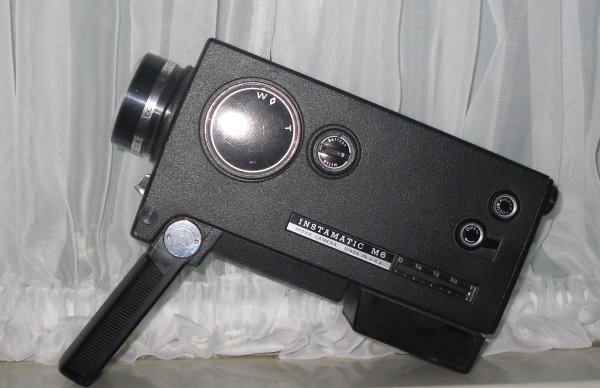
Andrew Webster
-
Posts
8 -
Joined
-
Last visited
Posts posted by Andrew Webster
-
-
The M6 is part of the Kodak M2-M4 series, so it should be OK to use-- those cameras have the old gear material but with far fewer and larger teeth, so they aren't prone to the same cheese-gear syndrome as the M22's, etc. That means it should meter the same as the M4, which can read ASA 40T/25D and 100T/64D films.
This same question came up a few months ago with 100D, and although there are several ways you can tweak it around, the best way is to insert the cartridge and also insert the metal key on top of the camera.
The cartridge will set the meter to ASA 64 without the internal 85 filter-- which is the SMPTE protocol for daylight cartridges-- and the key will further retract a metal shield, which fully opens up the meter's light path to match an ASA 100 setting.
BTW, the early 1964 M-series cameras were designed to use a planned ASA 100 'high-speed' film, which never materialized in the end.
What is the metal key? Does it come with the film? or is it part of the camera?
-
Try to check the camera out, those have a bit of a reputation for the gears to get broken over the years.
The were designed to use Kodachrome 40 - now rare and only processable until the end of this year. the modern reeversal film is ektachrome 100, which will require a ND filter on the lens. You should be able to get the ektachrome from Kodak, or dealers like "international Film"
Thanks for the info, will the Ektachrome 100 come already packed in the cartridges? In other words if I get the Ektachrome 100 from http://www.myoldcamera.com/Film.html, will it fit right into the M-6 camera? Also, do you think I will be able to find an ND filter that will fit an M6? or do I have rig it to fit?
-
Are you looking at the "Big Foot" film?
Yes, specifically Bill Munns' claim that he found 5 start/stops.
-
-
Film was shot on a Kodak K100 camera in 1960's, is there any possible way to determine with confidence where the camera operator stopped and restarted the filming?
If yes, what should I be looking for?
Could edits/splices be mistaken for stops and starts?
-
Has anyone thought of opening a film school in Michigan? I think we are starting to get a larger chunk of the business, and it would be nice if we could support the production requirements of the films shooting here.
-
1st of all- who cares if it is bigfoot or not, Bill Munns is asking for your help and you should give it to him, if you so choose, regardless of whether you think it is a costume or a living beast.
Bill Munns,
Why does it matter what lens this second film you are referring to is shot on? It seems that an overlay would tell you if they used the same lens or not. I'm just a prop guy, so I could be wrong.



Kodak M-6 Camera- What film should I use?
in Film Stocks & Processing
Posted
Here is the right side view of the same camera I have, there is a 1.25" long slot on top, behind the lens, and to the right of the center line (just above the Kodak logo). there is no metal key in it. There is the knob, on the right side, just in front of where the film cartridge would end when inserted, it has two settings. I do not know what this does, but it is right in front of where the shutter mechanism is located inside the film cartridge space. Could this knob be the filter mechanism? or is the slot on top the keyslot you were referring to? I don't think a screwdriver will fit into the slot.